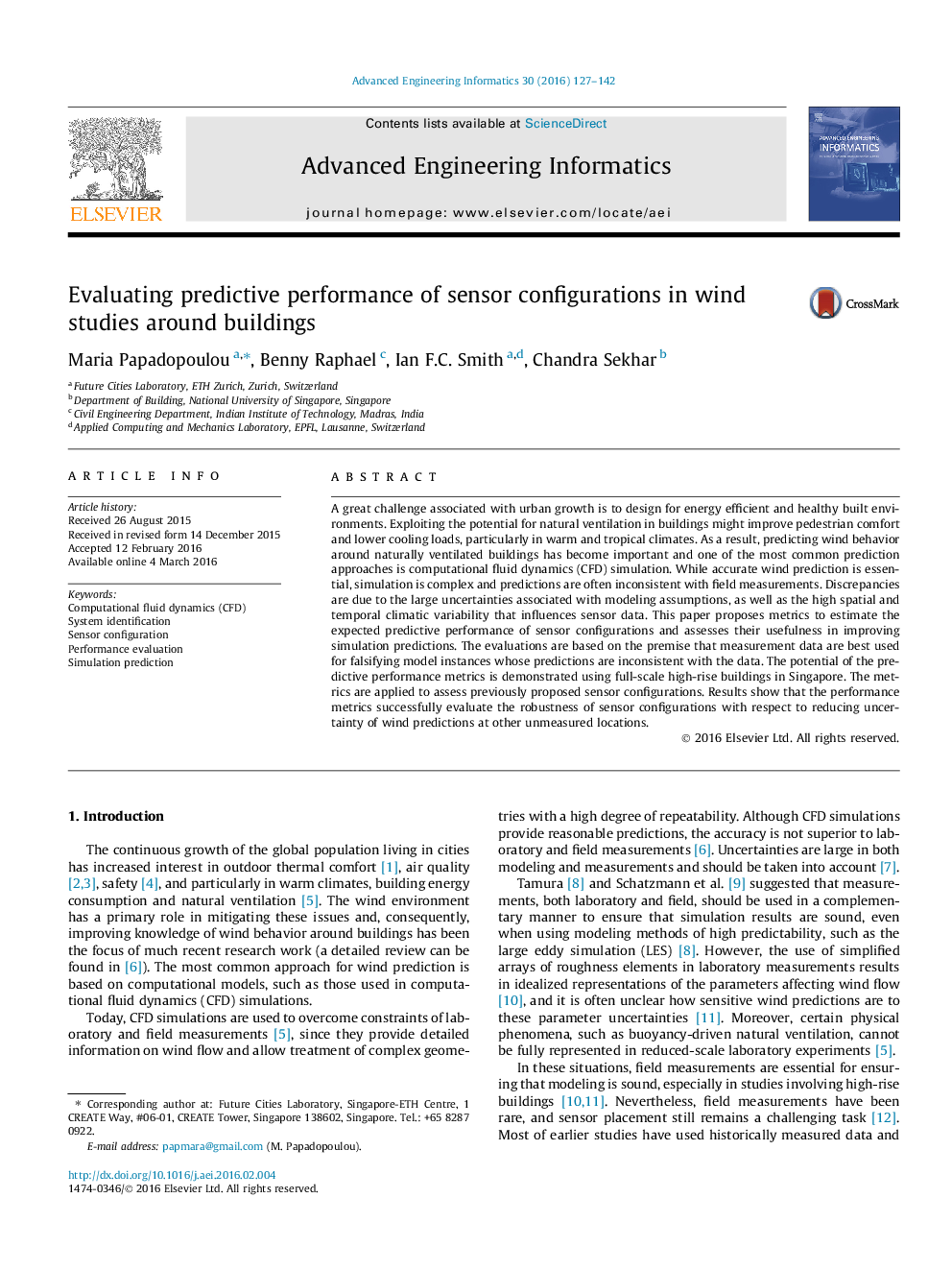| کد مقاله | کد نشریه | سال انتشار | مقاله انگلیسی | نسخه تمام متن |
|---|---|---|---|---|
| 241925 | 501790 | 2016 | 16 صفحه PDF | دانلود رایگان |
• This paper proposes metrics to estimate the expected predictive performance of sensor configurations.
• The metrics evaluate the robustness of sensor configurations with respect to reducing uncertainty of model predictions.
• The evaluations are based on the premise that measurement data are best used for falsifying model instances.
• Potential of the predictive performance metrics is demonstrated using full-scale high-rise buildings in Singapore.
A great challenge associated with urban growth is to design for energy efficient and healthy built environments. Exploiting the potential for natural ventilation in buildings might improve pedestrian comfort and lower cooling loads, particularly in warm and tropical climates. As a result, predicting wind behavior around naturally ventilated buildings has become important and one of the most common prediction approaches is computational fluid dynamics (CFD) simulation. While accurate wind prediction is essential, simulation is complex and predictions are often inconsistent with field measurements. Discrepancies are due to the large uncertainties associated with modeling assumptions, as well as the high spatial and temporal climatic variability that influences sensor data. This paper proposes metrics to estimate the expected predictive performance of sensor configurations and assesses their usefulness in improving simulation predictions. The evaluations are based on the premise that measurement data are best used for falsifying model instances whose predictions are inconsistent with the data. The potential of the predictive performance metrics is demonstrated using full-scale high-rise buildings in Singapore. The metrics are applied to assess previously proposed sensor configurations. Results show that the performance metrics successfully evaluate the robustness of sensor configurations with respect to reducing uncertainty of wind predictions at other unmeasured locations.
Figure optionsDownload as PowerPoint slide
Journal: Advanced Engineering Informatics - Volume 30, Issue 2, April 2016, Pages 127–142
